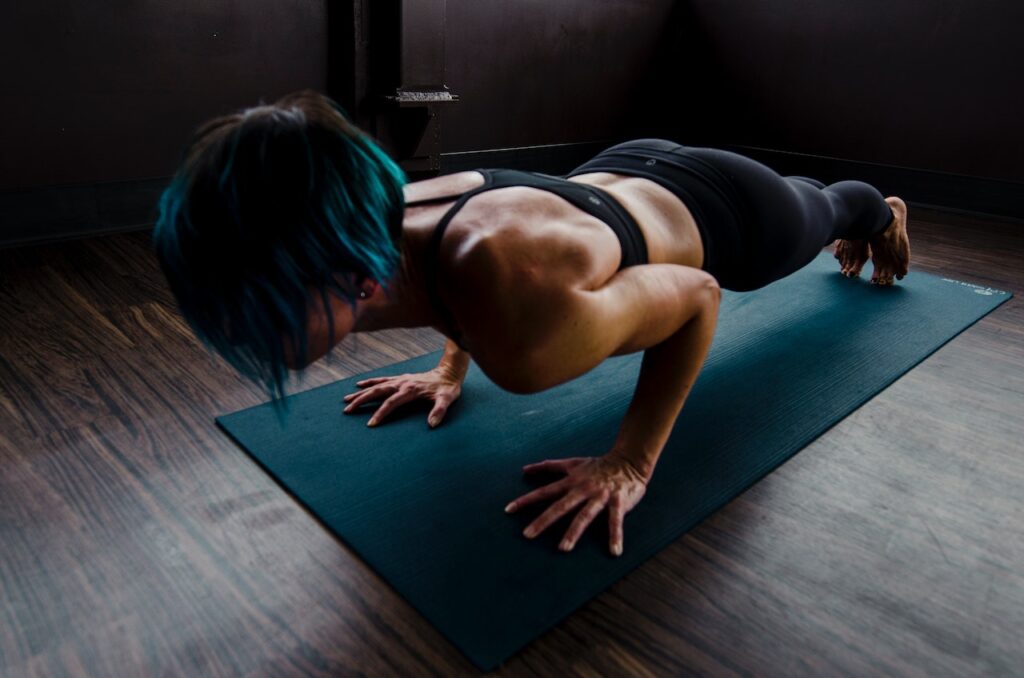Setting up a home gym can be a game-changer for your fitness routine. No more waiting for equipment, commuting to the gym, or dealing with crowded spaces. With a home gym, you can work out on your own terms and tailor your environment to your needs. In this article, we’ll cover everything you need to know about creating a home gym, from planning your space to choosing essential equipment and staying motivated.
Why Choose a Home Gym?
Creating a home gym offers several advantages:
- Convenience and time-saving: No need to travel to a gym; you can work out anytime you want.
- Cost-effectiveness: Although the initial investment might seem high, you’ll save money on gym memberships in the long run.
- Personalized workout environment: Tailor your gym space to your preferences, making it a motivating place to exercise.

Planning Your Home Gym
Before you start buying equipment, it’s crucial to plan your home gym setup.
Assessing Available Space
Identify a suitable space in your home for your gym. It could be a spare room, basement, garage, or even a corner of your living room. Consider the following:
- Space requirements: Ensure there’s enough room for your chosen equipment and for you to move around comfortably.
- Ventilation and lighting: A well-ventilated area with good lighting can make your workouts more enjoyable.
Setting a Budget
Determine how much you’re willing to spend on your home gym. Remember, you don’t need to buy everything at once. Start with essential items and gradually add more equipment as your budget allows.
Determining Fitness Goals
Understanding your fitness goals will help you choose the right equipment. Are you aiming to lose weight, build muscle, improve cardiovascular health, or enhance flexibility? Your goals will dictate the type of equipment you need.
Essential Home Gym Equipment
Selecting the right equipment is key to creating an effective home gym. Here are some essentials:
Dumbbells and Kettlebells
Dumbbells and kettlebells are versatile and perfect for strength training. They come in various weights, making them suitable for beginners and advanced users alike.
Resistance Bands
Resistance bands are great for a variety of exercises and are especially useful if you’re short on space. They offer different levels of resistance and can be used for strength training, flexibility exercises, and rehabilitation.
Cardio Machines
If your fitness goals include improving cardiovascular health, consider investing in a cardio machine. Here are a few options:
- Treadmills: Ideal for running or walking workouts.
- Stationary bikes: Great for low-impact cardio.
- Rowing machines: Provide a full-body workout and are excellent for cardiovascular fitness.
Multi-Functional Equipment
Multi-functional equipment like adjustable benches, power racks, and cable machines can add variety to your workouts while saving space.
Creating a Workout Routine
Having a structured workout routine is essential for achieving your fitness goals. Here’s how to create one:
Daily and Weekly Workout Plans
Plan your workouts in advance to ensure a balanced fitness routine. Include:
- Strength training: At least two to three times a week.
- Cardio: Aim for 150 minutes of moderate-intensity or 75 minutes of high-intensity cardio each week.
- Flexibility exercises: Incorporate stretching or yoga sessions.
Balancing Cardio, Strength, and Flexibility Exercises
A well-rounded fitness routine includes a mix of cardio, strength, and flexibility exercises. This balance helps improve overall fitness and prevents boredom.
Importance of Rest Days
Rest days are crucial for recovery and preventing injury. Ensure you include at least one or two rest days in your weekly routine.
Home Gym Safety Tips
Safety should be a priority when working out at home. Follow these tips to ensure a safe exercise environment:
Proper Equipment Maintenance
Regularly check and maintain your equipment to ensure it’s in good working condition. This includes tightening bolts, lubricating moving parts, and replacing worn-out components.
Safe Exercise Practices
- Warm up: Always warm up before starting your workout to prevent injuries.
- Use proper form: Focus on maintaining correct form during exercises to avoid strains and injuries.
- Listen to your body: If something doesn’t feel right, stop and reassess.
Injury Prevention
Invest in quality flooring or mats to reduce the risk of injury. Ensure your workout area is free from clutter and hazards.
Budget-Friendly Home Gym Setups
You don’t need to break the bank to set up a home gym. Here are some budget-friendly tips:
Finding Affordable Equipment
Look for deals and discounts on fitness equipment. Consider buying second-hand items or refurbished machines to save money.
DIY Solutions
Get creative with DIY solutions. For example, use household items like water bottles or bags of rice as makeshift weights. You can also build your own equipment, like a pull-up bar or squat rack, with basic materials and tools.
Prioritizing Essential Items
Focus on purchasing essential items first, such as dumbbells, resistance bands, and a mat. As you progress and your budget allows, you can gradually add more specialized equipment.
Tips for Staying Motivated
Staying motivated is key to maintaining a consistent workout routine. Here are some tips to keep you on track:
Setting Realistic Goals
Set achievable fitness goals that are specific, measurable, and time-bound. Celebrate your progress along the way to stay motivated.
Tracking Progress
Keep a workout journal or use a fitness app to track your progress. Monitoring your improvements can boost motivation and help you stay focused on your goals.
Creating a Motivating Workout Space
Design your workout space to be inviting and motivating. Decorate with inspiring quotes, keep the area clean and organized, and ensure it’s a space you enjoy spending time in.

